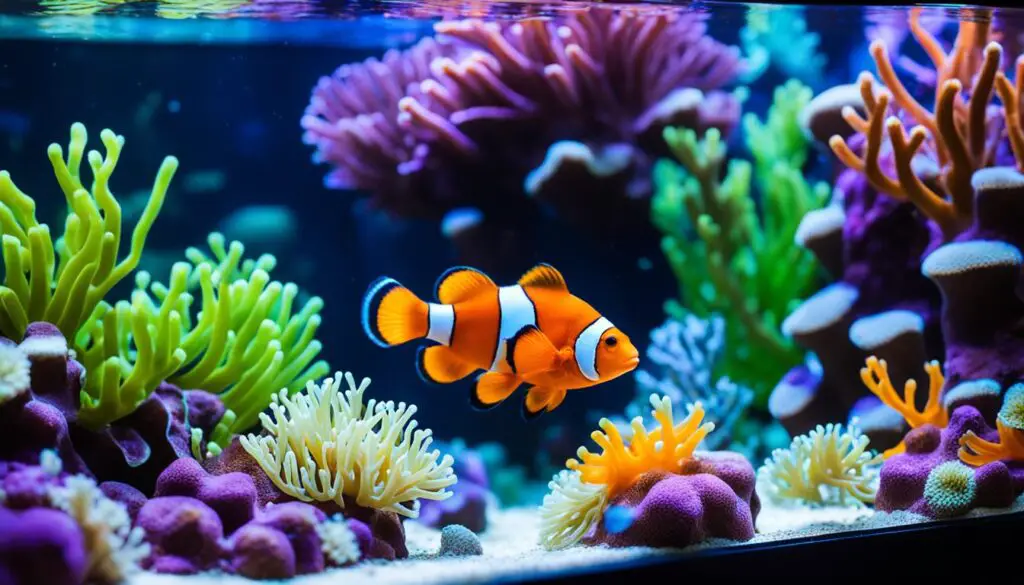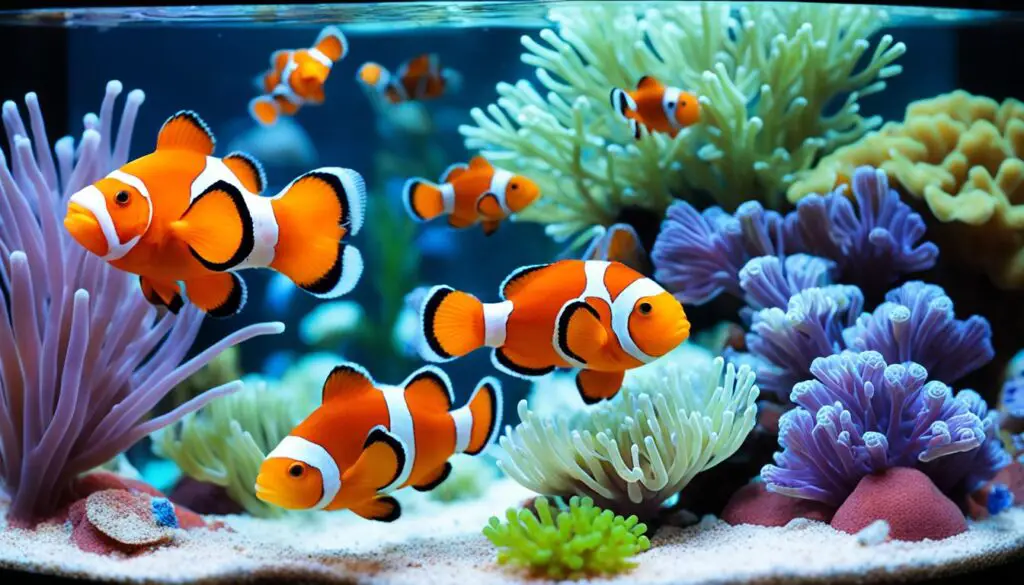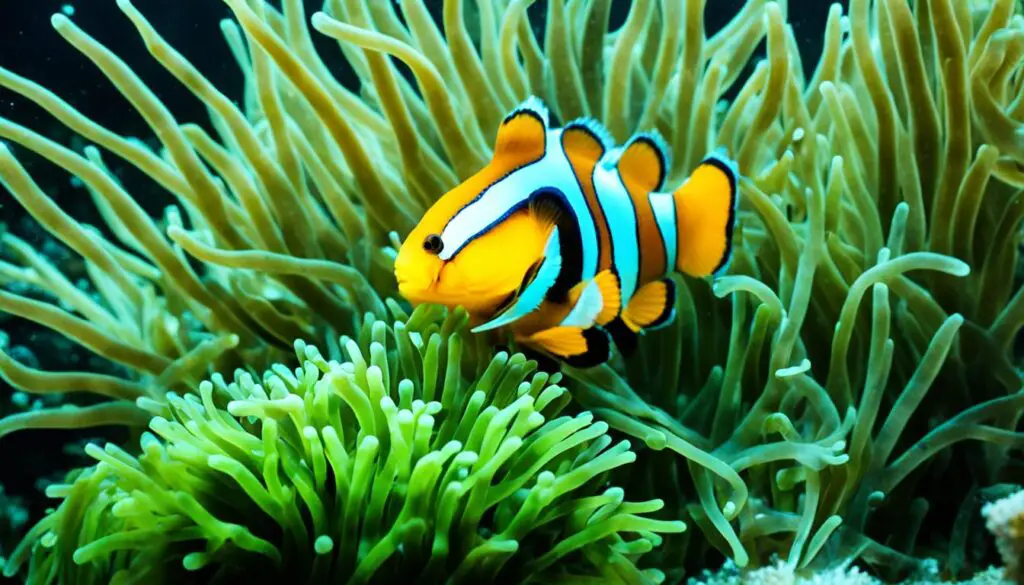What Is A Bioluminescent Bay
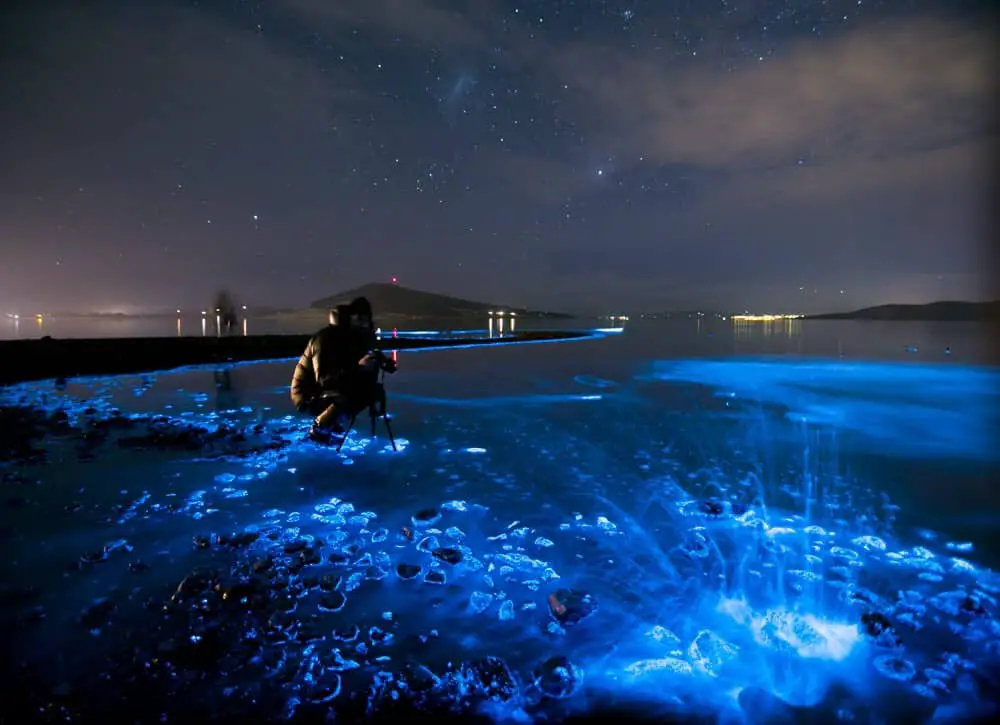
Introduction
What Is A Bioluminescent Bay: A bioluminescent bay is a natural phenomenon that occurs in certain coastal areas around the world. It is a body of water that emits a glowing light at night, creating a mesmerizing and magical experience for those lucky enough to witness it. This phenomenon is caused by the presence of bioluminescent organisms, such as dinoflagellates, which emit light through a chemical reaction.
Bioluminescence is the production and emission of light by a living organism. It is a rare and fascinating ability that is found in a variety of marine species, including certain types of bacteria, jellyfish, and plankton. These organisms have the ability to produce light through a process called bioluminescence, which involves the conversion of chemical energy into light energy.
The bioluminescent bay is a unique and fragile ecosystem that is home to a diverse range of marine life. The presence of these bioluminescent organisms not only creates a stunning visual display, but it also plays a crucial role in the ecosystem. The light emitted by these organisms can attract prey, deter predators, and even serve as a form of communication between individuals.
Visiting a bioluminescent bay is a truly unforgettable experience. As the sun sets and darkness falls, the water begins to glow with an otherworldly blue-green light. Every movement in the water creates a trail of sparkling light, as if the stars have fallen from the sky and landed in the bay. It is a sight that is both beautiful and mysterious, leaving visitors in awe of the wonders of nature.
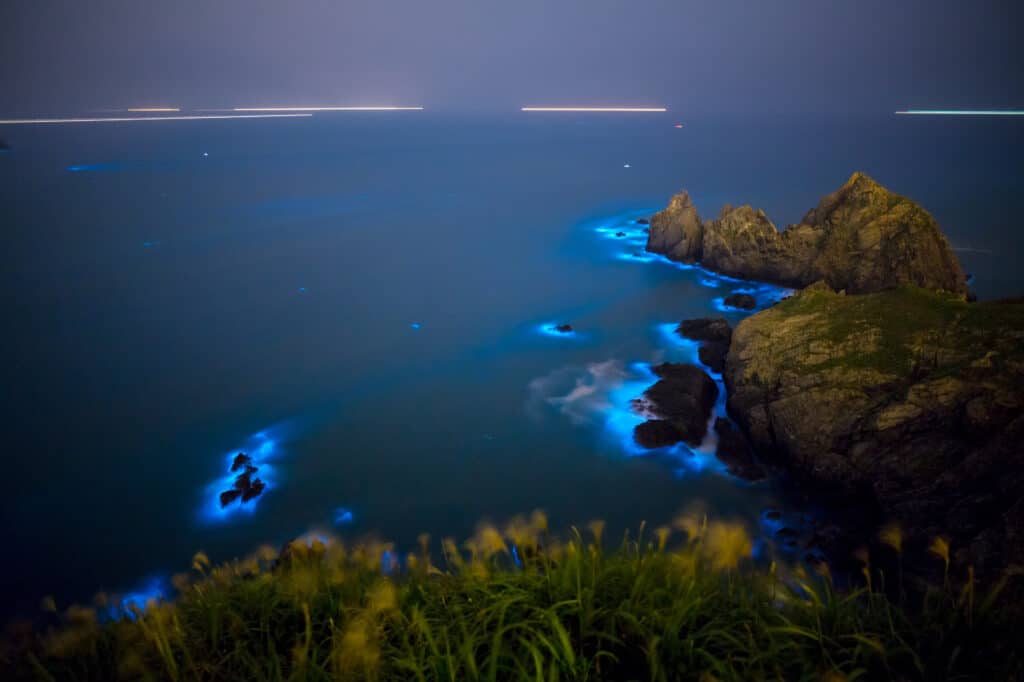
What makes a bay bioluminescent?
Why does the bay water glows? Bioluminescence is caused by a chemical reaction by microscopic organisms that dwell in the bay’s waters. The organisms known as dinoflagellates react when they sense the water being disquieted by human contact or fish. The chemical that sets off this reaction is known as ‘luciferin.
Bioluminescence is a fascinating phenomenon that occurs in various organisms, including some bays. It refers to the ability of certain organisms to produce and emit light. This natural light display is truly mesmerizing and has captivated scientists and nature enthusiasts for centuries. But what exactly makes a bay bioluminescent?
One of the key factors that contribute to the bioluminescence of a bay is the presence of bioluminescent organisms. These organisms, such as certain species of plankton, bacteria, and jellyfish, have the ability to produce light through a chemical reaction. This reaction involves the interaction of a light-emitting molecule called luciferin with an enzyme called luciferase. When luciferin and luciferase come into contact, they produce light as a byproduct.
Another important factor is the availability of nutrients in the bay. Bioluminescent organisms require specific nutrients, such as nitrogen and phosphorus, to thrive and produce light. These nutrients can come from various sources, including runoff from land, decaying organic matter, and upwelling of nutrient-rich waters from the deep ocean. When these nutrients are abundant in a bay, it creates favorable conditions for the growth and proliferation of bioluminescent organisms.
The physical and chemical properties of the water in a bay also play a role in its bioluminescence. For example, the temperature and salinity of the water can affect the growth and activity of bioluminescent organisms. Some species may prefer warmer waters, while others thrive in colder temperatures. Additionally, the pH level of the water can influence the bioluminescent activity, as certain organisms may be more active in acidic or alkaline conditions.
Lastly, environmental factors such as light pollution and human activities can impact the bioluminescence of a bay. Light pollution from nearby cities or towns can interfere with the visibility of bioluminescent displays, making them less visible to observers. Human activities, such as pollution and habitat destruction, can also disrupt the delicate balance of a bay’s ecosystem, potentially affecting the populations of bioluminescent organisms.
What happens when you swim in a bioluminescent bay?
Is It Safe to Swim in Bioluminescent Water? Some bioluminescent algae produce toxins that are harmful to marine wildlife, humans, and anything that comes in contact with them, so it may not be safe to touch the algae or swim in bioluminescent water.
When you swim in a bioluminescent bay, you are in for a truly magical experience. These bays are filled with microscopic organisms called dinoflagellates, which emit a beautiful blue-green light when they are disturbed. This phenomenon, known as bioluminescence, creates a stunning display of glowing water that is truly mesmerizing to witness.
As you enter the water, you will immediately notice the dark, mysterious glow surrounding you. With each movement you make, the water lights up with a brilliant blue-green hue, creating a trail of light behind you. It is as if you are swimming through a sea of stars, leaving a trail of stardust in your wake.
The bioluminescent organisms, known as dinoflagellates, are responsible for this incredible display of light. These tiny creatures have the ability to produce light through a chemical reaction called bioluminescence. When they are disturbed, either by movement or by the presence of other organisms, they emit a burst of light that illuminates the surrounding water.
Swimming in a bioluminescent bay is a truly unique experience that allows you to connect with nature in a whole new way. The glowing water creates a sense of wonder and awe, as you become a part of this natural light show. It is a reminder of the beauty and diversity of the natural world, and the incredible adaptations that organisms have developed to survive and thrive in their environments.
Not only is swimming in a bioluminescent bay a visually stunning experience, but it is also a sensory one. The water feels different as you swim through it, with a slight coolness and a gentle, almost ethereal texture. The combination of the glowing water and the sensation of swimming through it creates a truly immersive experience that is unlike anything else.
Can you swim in bioluminescent bays?
The bioluminescent bay at La Parguera, located in Lajas at the southwestern corner of Puerto Rico, is the only one where motorboats can come in and out. La Parguera is also the only bio bay where swimming is permitted, and some guided tours provide you with equipment so that you can dive in and swim after dark.
Yes, you can swim in bioluminescent bays. Bioluminescent bays are natural wonders that are found in various parts of the world, including Puerto Rico, Jamaica, and the Maldives. These bays are known for their stunning displays of bioluminescence, which is the emission of light by living organisms. The light is produced by tiny organisms called dinoflagellates, which are single-celled algae that emit light when they are disturbed.
Swimming in a bioluminescent bay is a truly magical experience. When you enter the water, every movement you make creates a trail of glowing light. It’s like swimming in a sea of stars. The water around you sparkles and shimmers, creating a surreal and otherworldly atmosphere. It’s a sight that is truly unforgettable.
However, it’s important to note that swimming in bioluminescent bays is a delicate experience that requires careful consideration. These bays are fragile ecosystems, and it’s crucial to take steps to protect them. For example, it’s important to avoid using sunscreen or other chemicals that can harm the organisms that produce the bioluminescence. It’s also important to avoid touching or disturbing the organisms, as this can disrupt their natural behavior.
Additionally, it’s important to be mindful of the local regulations and guidelines when swimming in a bioluminescent bay. Some bays may have restrictions on swimming or may require visitors to take certain precautions to protect the ecosystem. It’s important to respect these guidelines and to be a responsible visitor.
swimming in a bioluminescent bay is a truly magical experience. It allows you to witness the beauty of nature in a unique and extraordinary way. However, it’s important to approach this experience with care and respect for the delicate ecosystem. By doing so, you can enjoy the beauty of bioluminescent bays while also helping to preserve them for future generations to enjoy.
What are the 5 bioluminescent bays in the world?
5 Most Spectacular Bioluminescent Bays in the World
- Laguna Grande, Fajardo, Puerto Rico.
- La Parguera, Lajas, Puerto Rico.
- Mosquito Bay, Vieques Island, Puerto Rico. …
- Isla Holbox, Quintana Roo, Mexico.
- Manialtepec Lagoon, Puerto Escondido, Mexico.
Bioluminescent bays are natural wonders that showcase the beauty and magic of nature. These bays are filled with microscopic organisms called dinoflagellates, which emit a bright blue light when they are disturbed. This phenomenon, known as bioluminescence, creates a stunning display of glowing water that is truly mesmerizing to witness.
There are several bioluminescent bays around the world, but five of the most famous ones are:
1. Mosquito Bay, Puerto Rico: Located on the island of Vieques, Mosquito Bay is often considered the brightest bioluminescent bay in the world. The bay is home to a high concentration of dinoflagellates, which create a radiant blue glow that illuminates the water.
2. Halong Bay, Vietnam: Halong Bay is known for its stunning limestone karsts and emerald green waters, but it is also home to bioluminescent plankton. Visitors to the bay can witness the magical sight of the water glowing as they kayak or cruise through the bay.
3. Luminous Lagoon, Jamaica: Located in Falmouth, Jamaica, the Luminous Lagoon is one of the brightest bioluminescent bays in the Caribbean. The lagoon is fed by three rivers, which bring in nutrients that support the growth of dinoflagellates. Visitors can take boat tours to witness the glowing water up close.
4. Laguna Grande, Puerto Rico: Another bioluminescent bay in Puerto Rico, Laguna Grande is located in the town of Fajardo. The bay is home to a large population of dinoflagellates, which create a stunning display of bioluminescence. Visitors can take guided kayak tours to explore the bay and witness the glowing water.
5. Toyama Bay, Japan: Toyama Bay is famous for its bioluminescent firefly squid, which light up the bay with their blue glow. The squid migrate to the bay every spring, creating a breathtaking spectacle of bioluminescence. Visitors can witness this natural phenomenon by taking boat tours or visiting the nearby observatory.
Are there any bioluminescent beaches in the US?
Torrey Pines Beach, San Diego, CA
Torrey Pines State Beach is a coastal bioluminescent beach located in the San Diego, California. The waves here give a vivid blue glow as they crash ashore. And it is visible only after nightfall. Tip: Pick a dark spot at nightfall to witness the spectacular neon light.
Yes, there are bioluminescent beaches in the US. Bioluminescence is a natural phenomenon where living organisms produce light. It is commonly seen in marine environments, particularly in coastal areas. The light is produced by tiny organisms called dinoflagellates, which are single-celled algae that emit light when they are disturbed. These dinoflagellates are responsible for the mesmerizing glow that can be seen on certain beaches in the US.
One of the most famous bioluminescent beaches in the US is Mosquito Bay in Puerto Rico. It is often referred to as the “”Bioluminescent Bay”” due to its incredible display of bioluminescence. The bay is home to a high concentration of dinoflagellates, which create a stunning blue glow in the water when they are disturbed. Visitors can take guided kayak tours to experience this magical phenomenon up close.
Another bioluminescent beach in the US is Tomales Bay in California. This bay is known for its bioluminescent plankton, which create a beautiful display of blue-green light in the water. Visitors can rent kayaks or paddleboards to explore the bay and witness the bioluminescence firsthand. It is truly a unique and unforgettable experience.
There are also several other beaches along the coast of Florida that experience bioluminescence. For example, the Indian River Lagoon on the east coast of Florida is known for its bioluminescent comb jellies, which emit a greenish-blue light. Visitors can take boat tours or kayak through the lagoon to witness this natural light show.
In addition to these specific beaches, bioluminescence can occur in other coastal areas of the US as well. It is a natural phenomenon that can be influenced by various factors such as water temperature, nutrient levels, and weather conditions. Therefore, the occurrence of bioluminescence may vary from year to year and from location to location.
How does a bioluminescent bay differ from a regular bay?
A bioluminescent bay differs from a regular bay due to the presence of bioluminescent organisms that emit light. In a regular bay, the water may appear normal and devoid of any glowing properties. However, in a bioluminescent bay, the water glows and shimmers with a mesmerizing blue-green light, creating a magical and ethereal atmosphere.
This unique phenomenon is caused by the presence of bioluminescent microorganisms, such as dinoflagellates, which are responsible for the bioluminescence. These organisms possess the ability to produce light through a chemical reaction within their cells, resulting in the glowing effect observed in bioluminescent bays.
What organisms are responsible for the bioluminescence in a bioluminescent bay?
The organisms responsible for the bioluminescence in a bioluminescent bay are primarily dinoflagellates. These microscopic, single-celled organisms are equipped with special light-producing structures called photophores. When these dinoflagellates are disturbed, such as by movement in the water, they emit a burst of light, creating the mesmerizing glow in the bay.
Other organisms that contribute to the bioluminescence in a bioluminescent bay include certain species of bacteria, jellyfish, and comb jellies. Each of these organisms possesses unique mechanisms for producing light, adding to the overall luminosity and beauty of the bay.
What organisms are responsible for the bioluminescence in a bioluminescent bay?
The organisms responsible for the bioluminescence in a bioluminescent bay are called dinoflagellates. These are single-celled organisms that belong to the group of plankton. Dinoflagellates have the ability to produce light through a chemical reaction called bioluminescence. When they are disturbed or agitated, they emit a blue-green light, creating a stunning display of glowing water.
One of the most common species of dinoflagellates found in bioluminescent bays is the Pyrodinium bahamense. These dinoflagellates have a unique adaptation that allows them to produce light. They contain tiny organelles called scintillons, which are filled with luciferin and luciferase enzymes. When these enzymes come into contact with oxygen, they produce light.
The bioluminescence produced by dinoflagellates serves as a defense mechanism. When disturbed, they emit light to startle and confuse their predators, making it difficult for them to locate and capture the dinoflagellates. This ability to produce light also helps dinoflagellates attract prey, as some small organisms are attracted to the glowing water and become an easy food source for the dinoflagellates.
What factors contribute to the bioluminescence in a bioluminescent bay?
The bioluminescence in a bioluminescent bay is a result of several factors working together. One of the main factors is the presence of bioluminescent organisms, such as dinoflagellates or bacteria, that are capable of producing light through a chemical reaction. These organisms are often found in high concentrations in bioluminescent bays, which contributes to the overall brightness of the bioluminescence.
Another important factor is the presence of nutrients in the water. Bioluminescent organisms require certain nutrients, such as nitrogen and phosphorus, to thrive and produce light. These nutrients can come from a variety of sources, including runoff from nearby land or upwelling from deeper waters. When these nutrients are present in sufficient quantities, they can stimulate the growth of bioluminescent organisms and enhance the bioluminescence in the bay.
How does the bioluminescence in a bioluminescent bay benefit the organisms living there?
The bioluminescence in a bioluminescent bay provides several benefits to the organisms living there. One of the main benefits is that it serves as a form of communication. Many organisms use bioluminescence to attract mates, warn predators, or signal their presence to others of their species. The ability to produce light allows these organisms to communicate in the dark depths of the bay where other forms of communication, such as visual or auditory signals, may not be as effective.
In addition to communication, bioluminescence also plays a role in defense mechanisms. Some organisms in bioluminescent bays have the ability to produce bioluminescent flashes or clouds of light as a way to startle or confuse predators. This sudden burst of light can startle predators and give the prey organism a chance to escape. It can also serve as a warning signal to potential predators, indicating that the prey organism may be toxic or dangerous to consume.
Overall, the bioluminescence in a bioluminescent bay provides a unique advantage to the organisms living there. It allows for effective communication and defense mechanisms in an environment where other forms of communication may be limited. This adaptation has likely evolved over time to help these organisms survive and thrive in the specific conditions of a bioluminescent bay.
Are there any threats or challenges to the preservation of bioluminescent bays?
Yes, there are several threats and challenges to the preservation of bioluminescent bays. One of the main threats is pollution. Pollution from human activities such as sewage discharge, industrial waste, and agricultural runoff can have a detrimental effect on the delicate ecosystems of bioluminescent bays. These pollutants can disrupt the balance of nutrients and oxygen in the water, leading to a decline in the populations of the organisms responsible for bioluminescence.
Another challenge is habitat destruction. Bioluminescent bays are often located in coastal areas that are highly sought after for development. The construction of hotels, resorts, and other infrastructure can lead to the destruction of the mangroves and seagrass beds that provide important habitats for the organisms in the bay. Without these habitats, the populations of bioluminescent organisms can decline, ultimately leading to a loss of bioluminescence in the bay.
In addition, climate change poses a significant threat to the preservation of bioluminescent bays. Rising sea levels, increased water temperatures, and ocean acidification can all have negative impacts on the organisms in the bay. These changes can disrupt the delicate balance of the ecosystem and make it more difficult for the bioluminescent organisms to survive and reproduce. Without proper conservation efforts and measures to mitigate these threats, bioluminescent bays may be at risk of disappearing in the future.

Conclusion
A bioluminescent bay is a natural phenomenon that occurs when certain organisms in the water emit light. This creates a stunning display of glowing water that is often referred to as a “”glow-in-the-dark”” effect. These bays can be found in various parts of the world, but they are most commonly found in tropical regions where the conditions are ideal for bioluminescent organisms to thrive.
One of the most famous bioluminescent bays in the world is located in Puerto Rico, known as Mosquito Bay. This bay is home to millions of bioluminescent dinoflagellates, which are tiny organisms that emit light when they are disturbed. When the water in Mosquito Bay is disturbed, whether it be by a boat or a person swimming, the dinoflagellates light up and create a breathtaking display of blue-green light.
Bioluminescent bays are not only visually stunning, but they also play an important role in the ecosystem. The organisms that emit light in these bays are often at the bottom of the food chain, meaning they are a vital source of food for other marine life. Additionally, the light emitted by these organisms can help attract prey or deter predators, providing a survival advantage.
Visiting a bioluminescent bay is a unique and unforgettable experience. Many tour companies offer guided tours of these bays, allowing visitors to witness the beauty of the glowing water up close. Some tours even allow visitors to swim in the bioluminescent water, creating a truly magical experience.
Discover the enchanting world of bioluminescent bays and learn what makes them glow. Dive into the science behind this natural phenomenon and find out where you can witness the mesmerizing beauty of these glowing waters.

